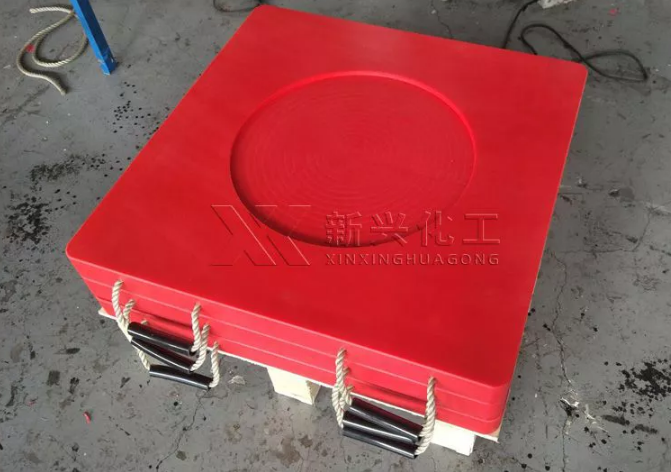The Safe Use of Outrigger Crane Pads for Equipment Stability
An outrigger crane pad is a solid block of engineered material used to distribute the weight of the equipment over a greater surface area.
An outrigger pad is a safety tool that can be used with any equipment that has outriggers, down jacks or stabilizers. It is a must for stability when a piece of equipment – such as a crane – lifts loads or personnel aloft.
Understanding Outrigger Crane Pads
Outrigger pads are essential components placed beneath the outrigger, shoe, float, or foot of equipment. Choosing the appropriate size and thickness of these pads depends on factors such as equipment type, soil conditions at the worksite, and the type of lift being executed.
When utilizing outrigger systems, it's critical to recognize that the contact area between an outrigger and the ground is relatively small. Due to the pressure exerted by the outrigger, the ground beneath it may shift, become displaced, or even collapse without the use of outrigger pads. Any of these scenarios could result in equipment instability or even a toppling accident. In fact, approximately half of all crane lifting accidents stem from improper outrigger usage.
Outrigger pads serve the crucial function of stabilizing equipment, preventing ground shifting and equipment tipping. Stability hinges on two main factors: the equipment's footprint and its center of mass. The footprint refers to the total area enclosed by the support structure, while the center of mass is the point where the equipment would balance if placed atop a single supporting point. If the center of mass extends beyond the footprint's edge, the equipment risks toppling. To enhance stability, two approaches are commonly employed. First, counterweights can be used to shift the center of mass back over the footprint. Second, an extendable outrigger system can enlarge the footprint.
While all cranes are equipped with counterweights, there are limitations to their weight due to transportation and setup constraints. Additionally, ground conditions may not always support crane deployment. Therefore, retractable outriggers are crucial for extending the crane's footprint and ensuring stability. Upon deploying the outrigger system, installing outrigger pads beneath them increases the contact area with the ground, effectively distributing equipment pressure through the pads to the ground surface.
Factors Affecting Stability
Several factors can influence the stability of equipment supported by outrigger crane pads:
Ground Conditions
The condition of the ground, including its composition, slope, and stability, can significantly impact the effectiveness of crane pads. Soft or uneven terrain may require additional measures to ensure stability.
Load Distribution
Proper load distribution is essential for preventing overloading and uneven weight distribution, which can compromise stability. Operators must carefully calculate and distribute the load to avoid exceeding the capacity of the crane pads.
Wind and Weather Conditions
External factors such as wind speed, gusts, and adverse weather conditions can affect the stability of equipment. Operators must monitor weather forecasts and take appropriate precautions to mitigate risks.
Safe Use of Outrigger Crane Pads
To ensure the safe and effective use of outrigger crane pads, operators should adhere to the following guidelines:
Proper Installation
Ensure that outrigger crane pads are correctly positioned and secured before operating the equipment. Follow manufacturer recommendations for installation and use.
Regular Inspection and Maintenance
Inspect crane pads regularly for signs of wear, damage, or deterioration. Replace worn or damaged pads promptly to maintain optimal stability and safety.
Load Capacity Considerations
Be mindful of the weight and dimensions of the equipment being supported by the crane pads. Avoid overloading or exceeding the rated capacity of the pads to prevent instability.
Regulations and Standards
Various regulations and standards govern the design, manufacture, and use of outrigger crane pads to ensure safety and compliance. Operators should familiarize themselves with relevant regulations and adhere to industry best practices.
Benefits of Using Outrigger Crane Pads
Using outrigger crane pads offers several benefits, including:
Enhanced stability and safety
Reduced ground pressure and surface damage
Increased operational efficiency
Compliance with safety regulations
Common Mistakes to Avoid
Operators should avoid the following common mistakes when using crane outrigger pads:
Neglecting proper installation and positioning
Failing to perform regular inspections and maintenance
Overloading crane pads beyond their rated capacity
Ignoring environmental factors that affect stability
Conclusion
In conclusion, outrigger crane pads play a vital role in ensuring the stability and safety of heavy equipment during operation. By understanding their significance, types, proper usage, and safety considerations, operators can minimize risks and enhance operational efficiency. Adhering to regulations, conducting regular inspections, and avoiding common mistakes are essential for maximizing the benefits of outrigger crane pads.

Comments
Post a Comment